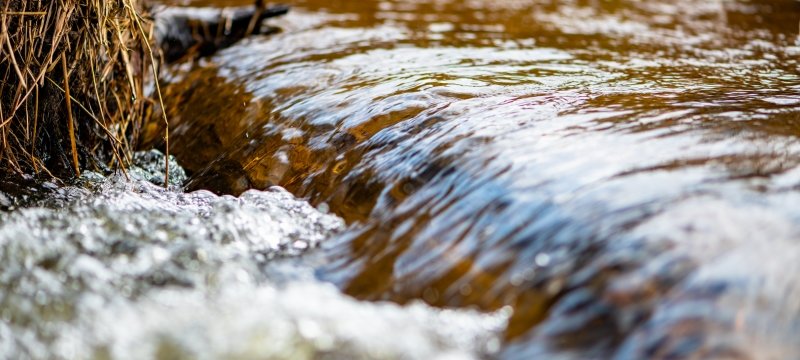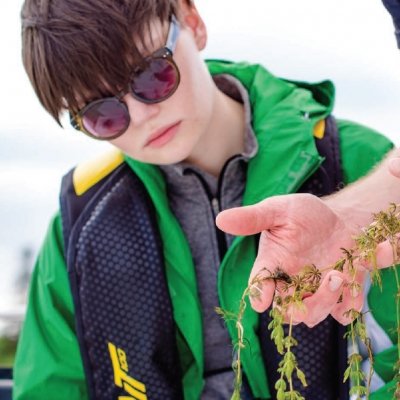What Makes for a Healthy River
Graduate student Michelle Kelly is working with Professor Amy Marcarelli to develop new, predictive modeling techniques to identify the combination of factors best able to produce a healthy balance of energy and nutrients in rivers and streams.
A river ecologist, Kelly studies the energy and nutrient cycles in flowing water of varying sizes. She is working with large data sets from across the United States to model energy and nutrient cycles.
“People have metabolisms that break down the nutrients they take in to release energy,” Kelly explains. “Rivers do the same thing.” Organic matter and nutrients come into rivers from the watershed, and rivers contain organisms such as fish, plants, and micro-organisms that break that material down, recycling it.
Kelly investigates the relationships between those energy and nutrient cycles. She specifically looks at nitrogen, which is necessary for everything’s growth. Has she found any wide-scale patterns? “It comes down to; it depends,” Kelly says.
The size of the river determines what happens, she explains. In smaller, forested rivers, plant matter can get less light, and the amount of light changes the energy-nutrient cycle. In larger rivers, there can be more plants and other photosynthetic organisms, but the water might be deeper and quicker-moving, making it harder for plants to thrive.
Working with computer modeling, Kelly hopes to determine the combination of factors that produce a healthy balance of energy and nutrients in rivers. “We want to be able to say, in a healthy stream, the energy and nutrient cycles would look like this.”
Kelly is also setting up experimental tanks to test some of her findings.
Getting the Lead Out Using Plants
There’s lead in the soil around old houses where lead-based paint was commonly used. And it’s making people—especially children—sick. Biological Sciences Professor Rupali Datta wants to fix that.
Datta, who joined the Michigan Tech faculty in 2009, is researching ways to use plants to remediate lead contamination of soil. Up to now, the only way to do that has been “dig and haul,” digging up the contaminated soil and hauling it away. That is too expensive and difficult for most households, particularly in low-income areas where lead contamination is most common.
“Our goal is to use inexpensive, sustainable remediation methods that are easy to implement,” she says.
With funding from the US Department of Housing and Urban Development, Datta and colleagues are studying the use of vetiver grass, a kind of grass that originated in South Asia. It is easy to grow, grows fast, and has a huge root system. Vetiver grass is tolerant of lead and can absorb it efficiently. “So you just plant the grass, let it grow, cut it and let it grow again,” she says. “Each growing cycle, it removes more lead.”
Datta and Smitha Rao Hatti, assistant professor of biomedical engineering, are also working on research using human cells to determine the effects of lead and arsenic contamination. There are three routes for heavy metal contamination to get into the body; she explains inhaling, touch and ingestion. The researchers are working with skin cells and cell lines from the intestinal lining. They hope to develop models for arsenic and lead uptake in humans.
Datta has recently received a new three-year grant from HUD, worth $699,916, to study chemical remediation. She is looking at amendments, such as rock phosphate, biochar, and compost, to see how well and for how long they bind lead in the soil.
Other research projects on her plate include arsenic uptake by plants, particularly rice, and mine contamination in the Navajo Nation in New Mexico.
Datta received her Ph.D. in life sciences with a concentration in plant biochemistry from the University of Hyderabad in India. She then did a fellowship in Japan and a postdoctoral fellowship at the University of Florida before taking a faculty position at the University of Texas at San Antonio.
She is committed to teaching as well as research. “Ultimately, my goal is training the next generation of students, encouraging them to seek careers in research and teaching, as I did,” she says. “I want to inspire students and help society.”
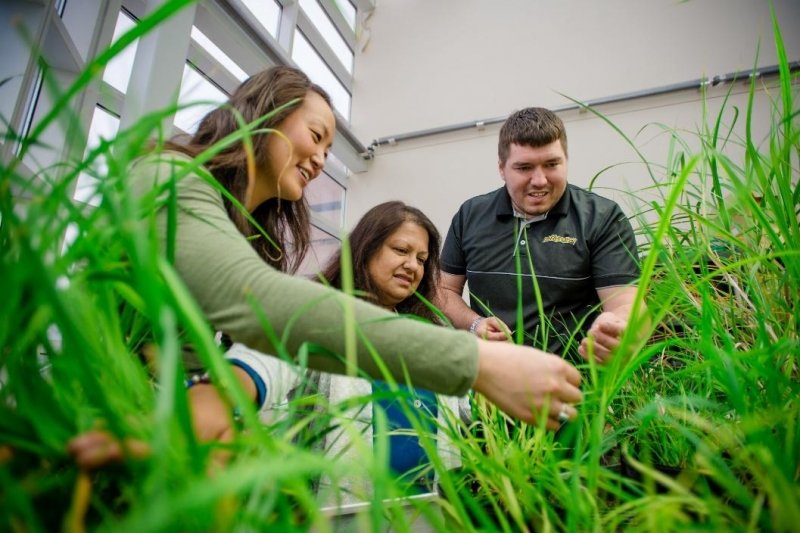
Saving the Brook Trout by Restoring their Spawning Habitat
Professor Casey Huckins has been studying the ecology of coaster brook trout for nearly 20 years. He started out investigating the population ecology and life history of these migratory fish. But due to human impacts on the watershed that affect the trout population, his research has turned to studying the movement patterns of coaster brook trout and ways to restore them and the habitat they need to spawn. Recently, with funding from the Michigan Departments of Environment, Great Lakes and Energy (EGLE) and the Department of Natural Resources, his lab has been actively restoring its critical habitat.
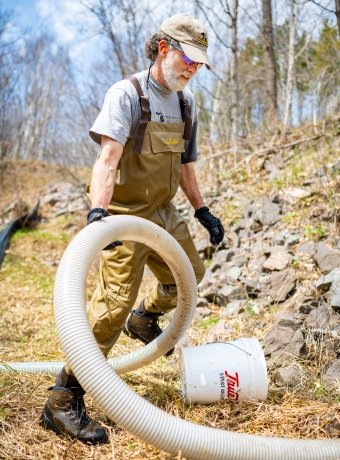
“Human actions have turned these iconic heritage species of Lake Superior into a conservation concern by overharvesting them and disturbing their habitat,” Huckins explains.
His team is actively studying the two coaster brook trout populations still known to exist along the south-central shore of Lake Superior.
These migratory coaster brook trout live in Lake Superior but return to their rivers of origin to breed in the same spots where they were spawned. Their spawning habitat has been buried by disturbances in the watersheds, such as logging and road use that alter the critical dynamic of erosion and sedimentation, resulting in a buildup of fine sand. This sand covers larger sediment particles such as cobbles—small rocks that have been rounded by water flow—and pebbles that are needed as spawning habitat and are also home for the brook trout’s food and aquatic insects.
With his recent state funding, Huckins says his goal is to restore the critical spawning habitat by removing excess sand and then to study the impacts that have on the habitat and the coaster brook trout population. His team has installed in-stream sand collectors that passively collect sand as it flows over them. The researchers then routinely operate pumps to move the sand out of the floodplain.
“We have determined that we can effectively conduct this restoration and that it appears to have positive impacts on the habitat and thus on the brook trout population,” Huckins says. “After restoration, we see more young brook trout in the restoration site in the following year.”
Huckins’ team is now investigating whether the community of stream insects that are key food items for the brook trout also increases in abundance, diversity, and community structure. He is hoping to see a site similar to the natural, free-flowing cobble-based cold-water habitat was found at the site when he started studying it with his graduate students nearly two decades ago.
His next goal is to acquire additional funding to automate the sand collectors so that they operate independently, without the researchers having to spend time and fuel traveling to the site to manually pump the sand. They are also working to deploy this system in other streams and rivers, using their equipment to restore other rivers that have been and are becoming increasingly degraded by erosion from flooding, land use, or other actions that send sand flowing downstream. As our climate changes, we expect to see more extreme events that will have outcomes we need to address to restore and maintain these critical aquatic ecosystems, Huckins says.
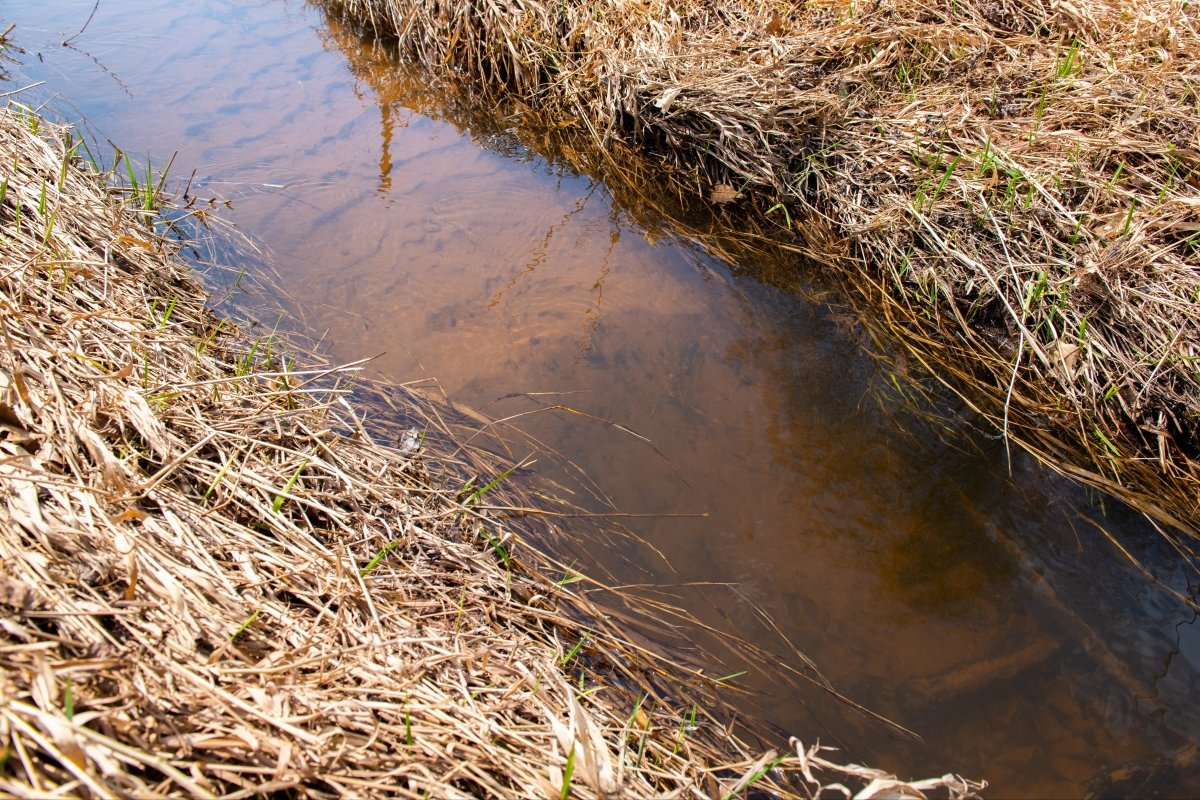
Michigan Technological University is an R1 public research university founded in 1885 in Houghton, and is home to nearly 7,500 students from more than 60 countries around the world. Consistently ranked among the best universities in the country for return on investment, Michigan's flagship technological university offers more than 185 undergraduate and graduate degree programs in science and technology, engineering, computing, forestry, business, health professions, humanities, mathematics, social sciences, and the arts. The rural campus is situated just miles from Lake Superior in Michigan's Upper Peninsula, offering year-round opportunities for outdoor adventure.
